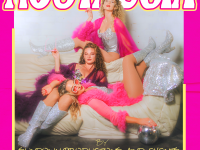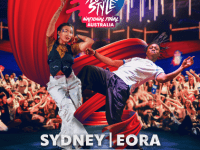FORM Dance’s Solo Triple Bill ‘Common Anomalies’

Riverside Theatres, Parramatta, Nov 2
Review by Katrina Ortolan
FORM Dance Projects and Riverside Theatres presented a triple bill of contemporary dance performances by young artists in Common Anomalies from 2 – 4 November 2017.
Vastly different in style, the three works explore each of the performer’s unique personal histories. The performances adapt breakdance, visual art, contemporary techniques, vogue and folklore styles in a series of vignettes.
Each performer’s work has a unique approach with the common thread between the pieces being the anomalies of each artist – the fusing of things rarely seen together, to create something unique and personal for each.
As a group of around 120, opening night ticket holders gather in the Riverside Theatre Foyer, 8pm strikes the clock and we are left checking our tickets to ensure that we are at the right venue as we wait in front of 2 closed theatre doors. ‘What is going on?’ we no doubt all thought. To confuse us even more, a random individual dressed in a Cookie Monster (?) suit is spotted dancing alone in the courtyard to music that can also be heard where we are waiting. Very confused and unsure of this individual, we are assured by a venue usher that we should relocate so that the Cookie Monster is in full view and give our attention to the performance.
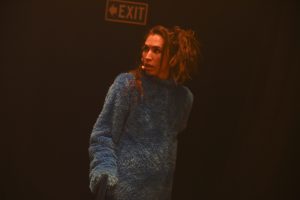
And aren’t I glad we did because even though I was still very confused as to what I was witnessing as the Cookie Monster slowly, too slowly, made its way through the foyer towards the theatre doors, I could not look away and I was surprisingly intrigued.
Having a giggle to ourselves at the absurdity of the situation, 50 very curious ticket holders followed the Cookie Monster into the theatre and took their seats as it began to climb from one audience chair to another until finally settling in the aisle at the back of the theatre. As the head of this costume is removed, we realise that this is the first of the night’s three solos, Bhenji Ra performing Approaching Gone (#ytfingers).
A simple yet so surprisingly effective performance, Bhenji used very subtle floor movements and constant repetition of basic 5-word sentences to create a piece where nothing really happened, yet I was completely entertained. The way she captivated the entire audience using her voice, her vocal expression and her focused yet insanely quirky presence worked, and it worked well!
This piece intended to explore the consumption of cultural practice and look into the possibilities of resistance against the commodification of the ‘cultural’ body/identity. While I am not convinced that this message was received by this performance, I am 100% convinced that I want to see the full body of work that this solo was taken from!
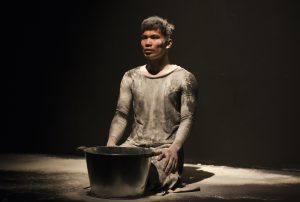
As Imanuel Dado took to the stage next, the audience was almost immediately taken to a new space. Without even hearing the music’s first beat, we could feel instantly that we were about to embark on a more emotional journey and my complete focus was with this sole performer on stage.
Imanuel’s performance of What We Don’t See explores conscious and subconscious decision making – why we make the decisions that we do; the consequences of those decisions; and the pressure that we put on ourselves to succeed.
As Imanuel moved so gracefully under a simple spotlight, I felt so much empathy for this individual who flawlessly portrayed the process of decision making and the impact it makes on our daily lives. This impact, not always positive, was expressed using one black wall, one tub of white flour and one emotionally engaging performer that transported you back to those times in your own past when you felt so overwhelmed and almost defeated.
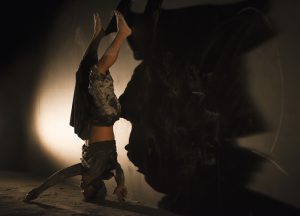
I thoroughly enjoyed being taken on this journey and experiencing the struggle through Imanuel’s performance. This was an extremely relatable piece that allowed us to genuinely sympathise with the performer.
After a short interval we returned to our seats to find a small kitchen set on stage and Carl Sciberras stood behind ready to perform Gbejniet – an ode to Carl’s Nan’s soup recipe! Like Carl, the soup has origins in Italy, Malta and Australia, and was used as a metaphor to explore mixed race heritage. Unfortunately for Carl, it was not used well and the intended message of this piece was not conveyed on stage and was not the journey that the performance took me on.
Being of Italian heritage myself, I enjoyed the ‘old school’ and ‘ethnic’ elements to this piece. Displayed via images on screen, the choice in music as well as the traditional dance routines, Carl’s history and connection to the European culture was evident.
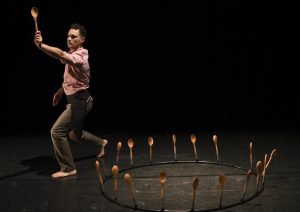
But I struggled to stay ‘in the moment’ with this piece due to the constant set changes, the shifting of props on stage as well as the back-and-forth, to-and-from the makeshift kitchen… my focus was constantly broken and I failed to stay immersed in the journey Carl was attempting to take us on. Already restless, I then found it nearly impossible to stay engaged when Carl performed two routines, ten times each! and each time with a different balloon!
Although fond of the ethnic aspects of this piece, Carl’s performance of Gbejniet left me lost. Then again, maybe I just didn’t quite ‘get it’?
Congratulations to all involved in this production and I encourage you to get along to the Riverside Theatre for the final show on November 4th. Box Office (02) 8839 3399 or www.riversideparramatta.com.au

